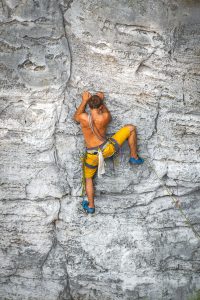Itai Liptz – Mountain Climbing Improves and Ddecision-Making Processes
January 25 2024•Cfao
How Mountain Climbing Improves Our Decision-Making Processes As Managers by Itai Liptz.
Although mountain climbing has a reputation for being dangerous, experience, careful planning, proper equipment, physical fitness and teamwork can minimize most risks. However, one lapse of judgment by the climber can endanger everyone.

In a recent study, researchers found that by emphasizing a collectivistic mindset, groups can blur disruptive attributes such as nationality and climbing experience. This blurring can lead to better summiting success.
Decision-Making Processes
Climbers are accustomed to the truth of Burns’ aphorism, “the best laid plans of mice and men gang aft agley.” Weather, unforeseen difficulties on the ground and the performance of the team can all change route plans. To stay safe, climbers must have clear thresholds and deadlines established before they set off. In business, establishing clearly defined boundaries is called risk appetite and is essential to the success of any organization.
A resilient individual will be able to withstand organizational setbacks without becoming paralyzed. They will be able to see challenges as opportunities rather than obstacles, and they will take a measured gamble on what the future holds instead of the reckless Russian roulette of blind chance. This is a key leadership attribute that mountain climbing teaches. It is why so many executives seek out mountain climbing experiences as part of their character and leadership training. Climbing also teaches critical problem-solving skills. Climbers must make countless iterative decisions in order to complete each pitch of a route.
Adaptability
Mountain climbing is an incredibly physical activity and a demanding mental exercise. But as anyone who has ever been on a mountain can attest, it also offers a deep sense of peace and a profound appreciation for the beauty of nature.
Climbers prepare thoroughly for their expeditions, developing detailed plans and creating contingency plans. They must be ready for any unexpected event that could affect their progress, such as bad weather or dangerous terrain.
They must also develop a clear model of what the path ahead is supposed to look like. This is especially important for climbing at high altitudes, where a lack of oxygen can lead to debilitating headaches and disorientation. They must also establish clear thresholds of risk before setting out; otherwise, the climber may become overzealous and push themselves too far into a dangerous situation. This is why it’s so important for organizations to have tough discussions about their risk appetite before embarking on a scaling journey.
Problem-Solving
Climbing requires an ability to solve complex problems in a dynamic environment. Climbers must consider the weather, their own skill levels and other team members when deciding to climb or not, which enhances problem-solving abilities.
Climbers also use their problem-solving skills to find the most efficient way up a route. This is important for efficiency and safety reasons as well as to avoid potential calamities such as rope burns or falls.
Setting clear thresholds and deadlines before a climb is crucial to survival on mountain climbing expeditions. Without clear boundaries, climbers can easily succumb to summit fever and push themselves into a dangerous situation. Establishing these boundaries before an adventure allows climbers to assess the risks and pull back when necessary. This is the reason that a Go/No Go matrix is such an important tool for any mountaineer. This simple matrix outlines the weather conditions that would be safe and dangerous for climbers of all experience levels to engage in a particular activity.
Decision-Making Skills
Whether it’s summiting Yosemite’s hardest rock face or scaling a multi-national business, mountain climbing puts our decision-making abilities to the test. When things go wrong, the results can be devastating — and there is no room for error.
Climbers
Climbers must set performance targets, monitor their progress and adjust plans as needed to achieve their goals. They must also be able to stay focused when the going gets tough. Unlike a high-pressure business decision, a mistake on the mountain can be life-threatening, which makes it much more difficult to use the “base camp thinking” that many executives tend to fall into when faced with challenges.
Klinke outlined several leadership lessons that he took from the 1996 disaster on K2, including establishing clear goals for the expedition, listening to all members of the team, and avoiding sunk cost bias (the tendency to continue an activity despite a substantial prior investment). This type of learning is critical for leaders tasked with managing risk and achieving business continuity.